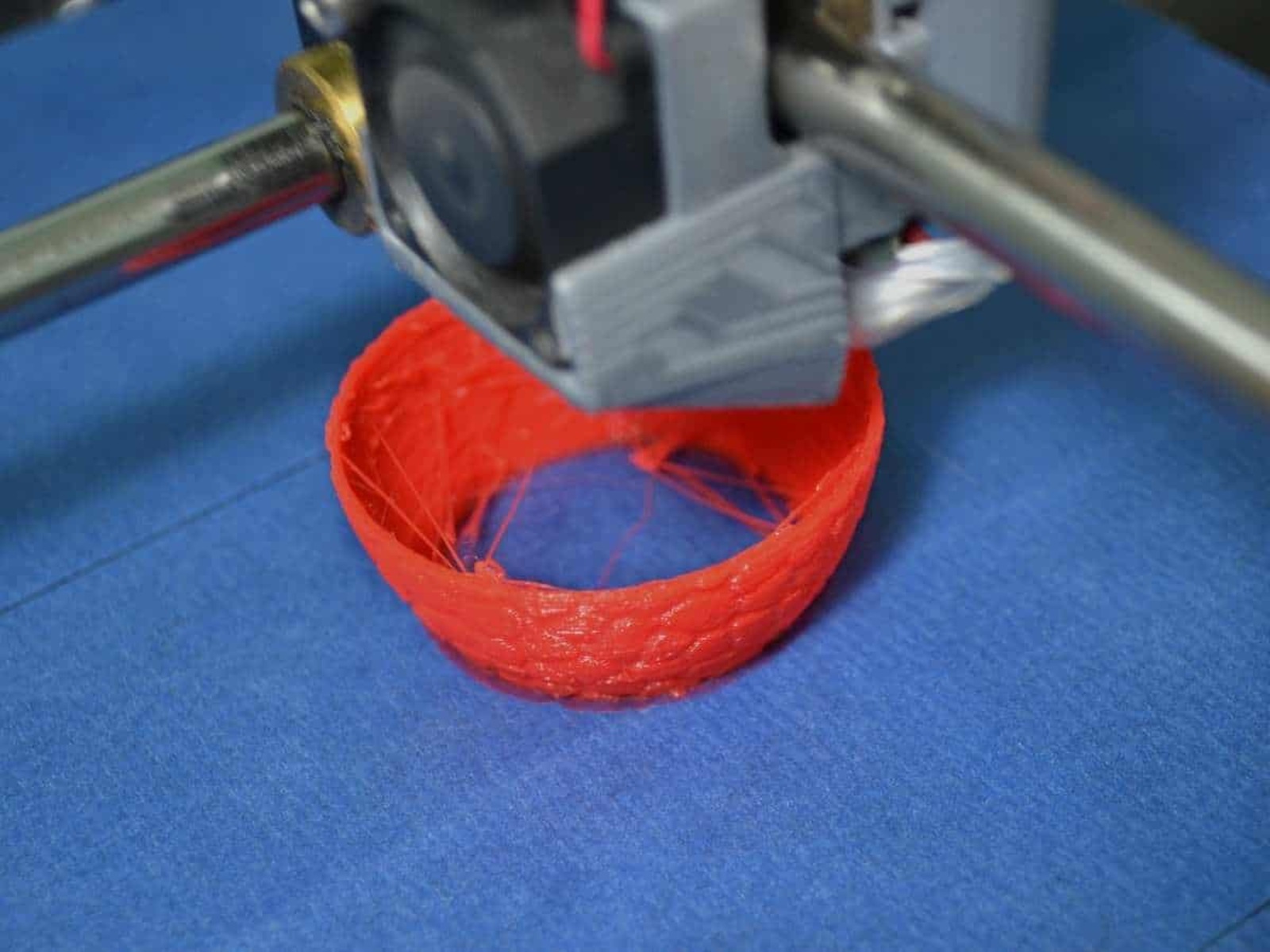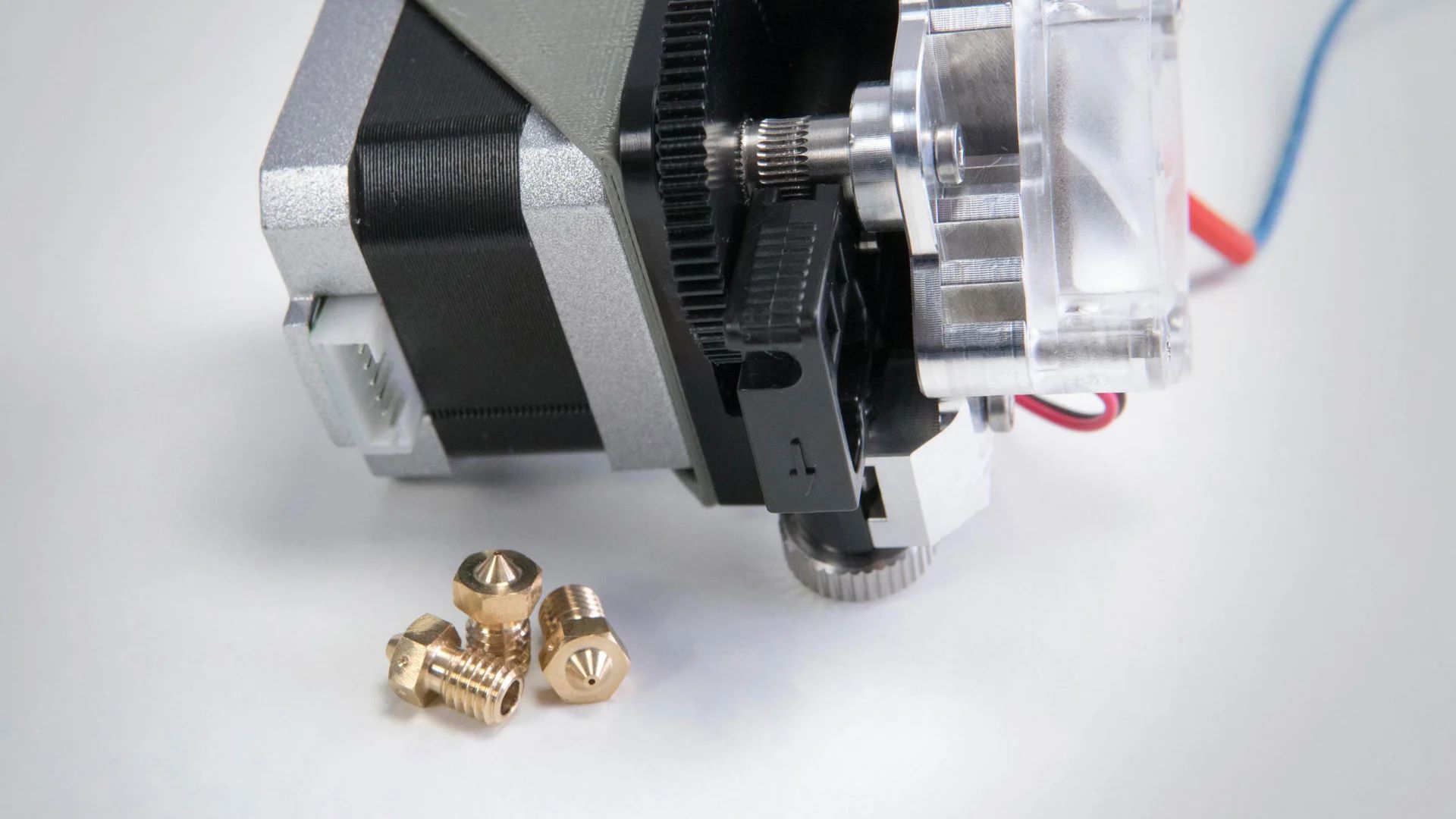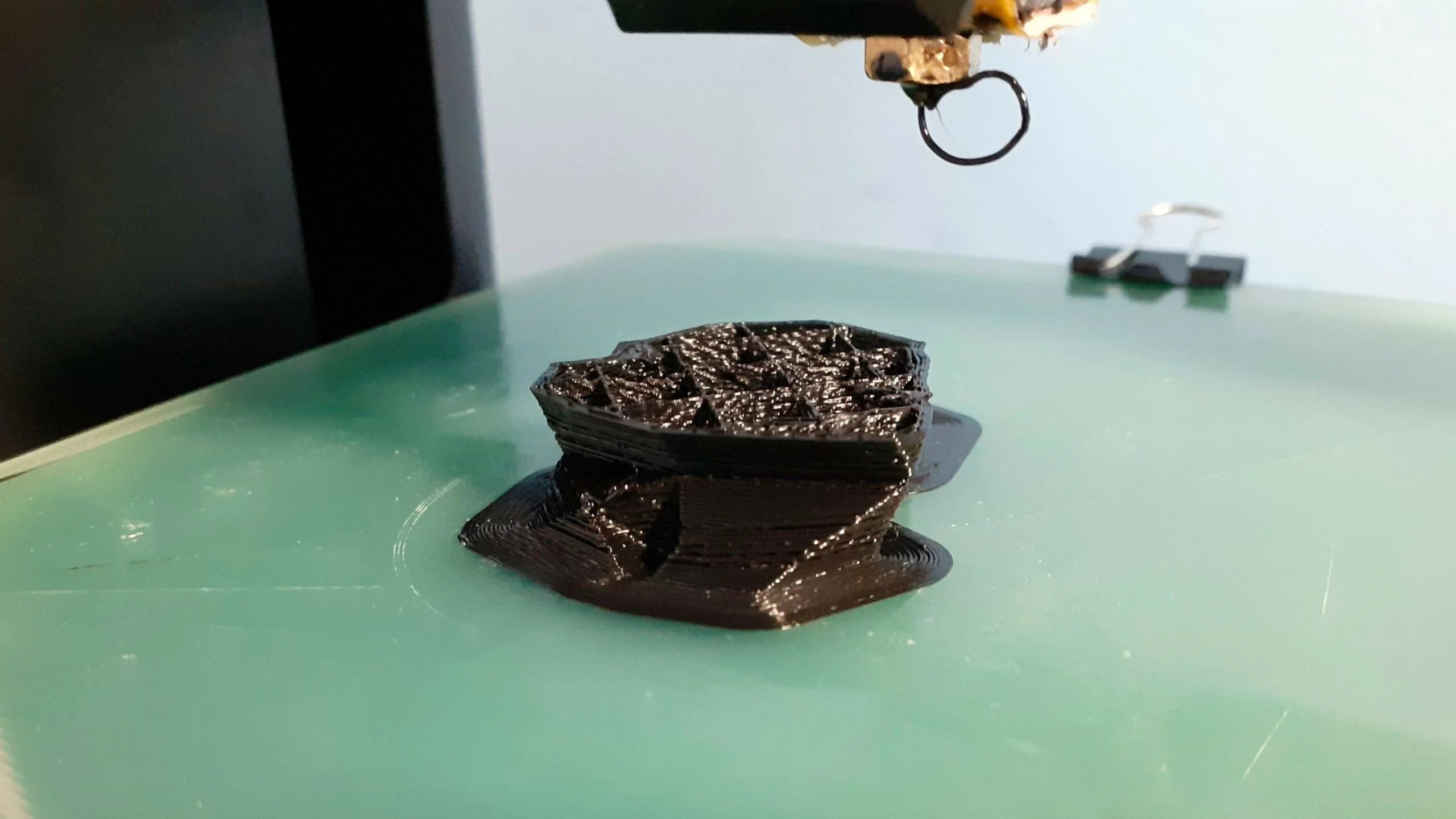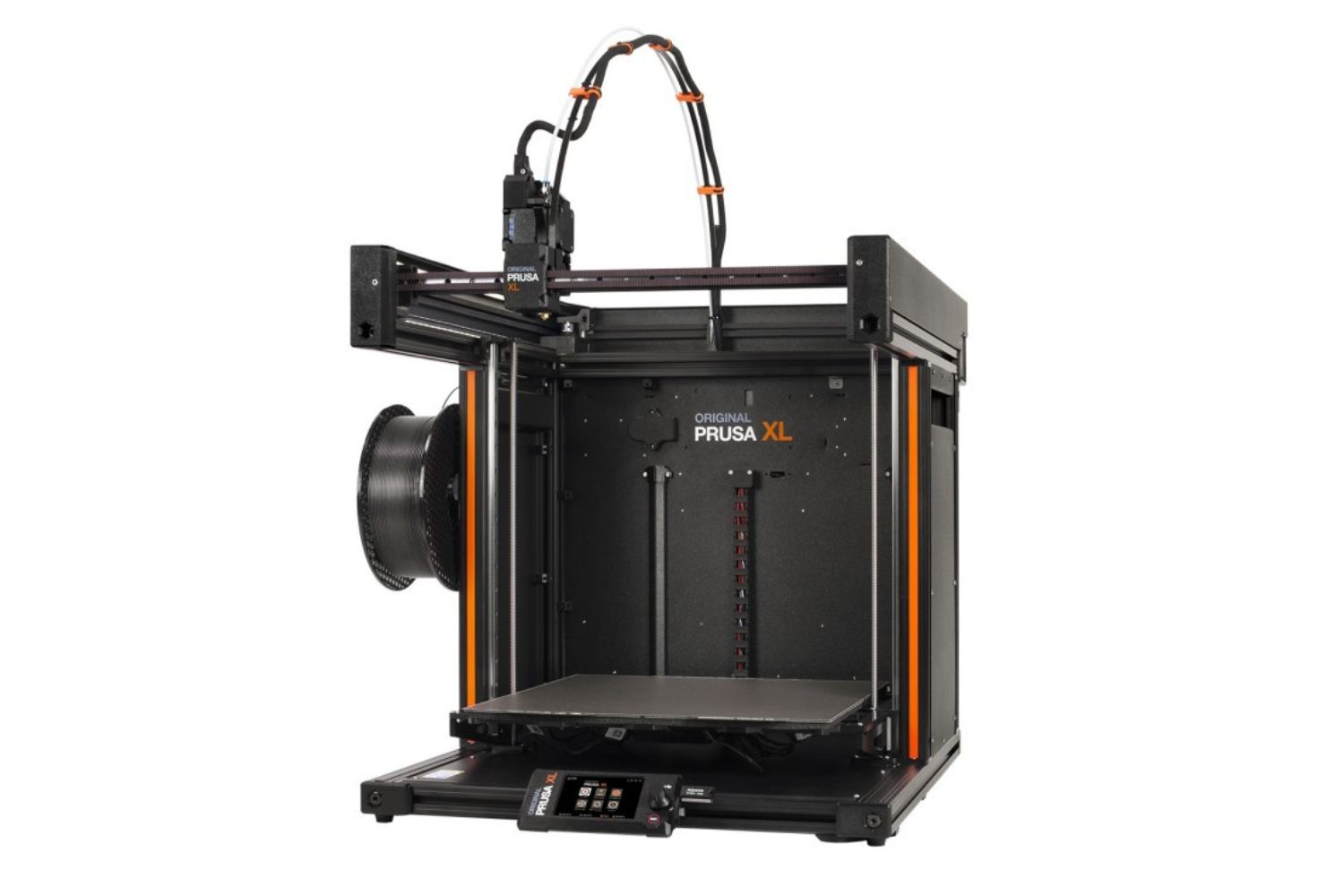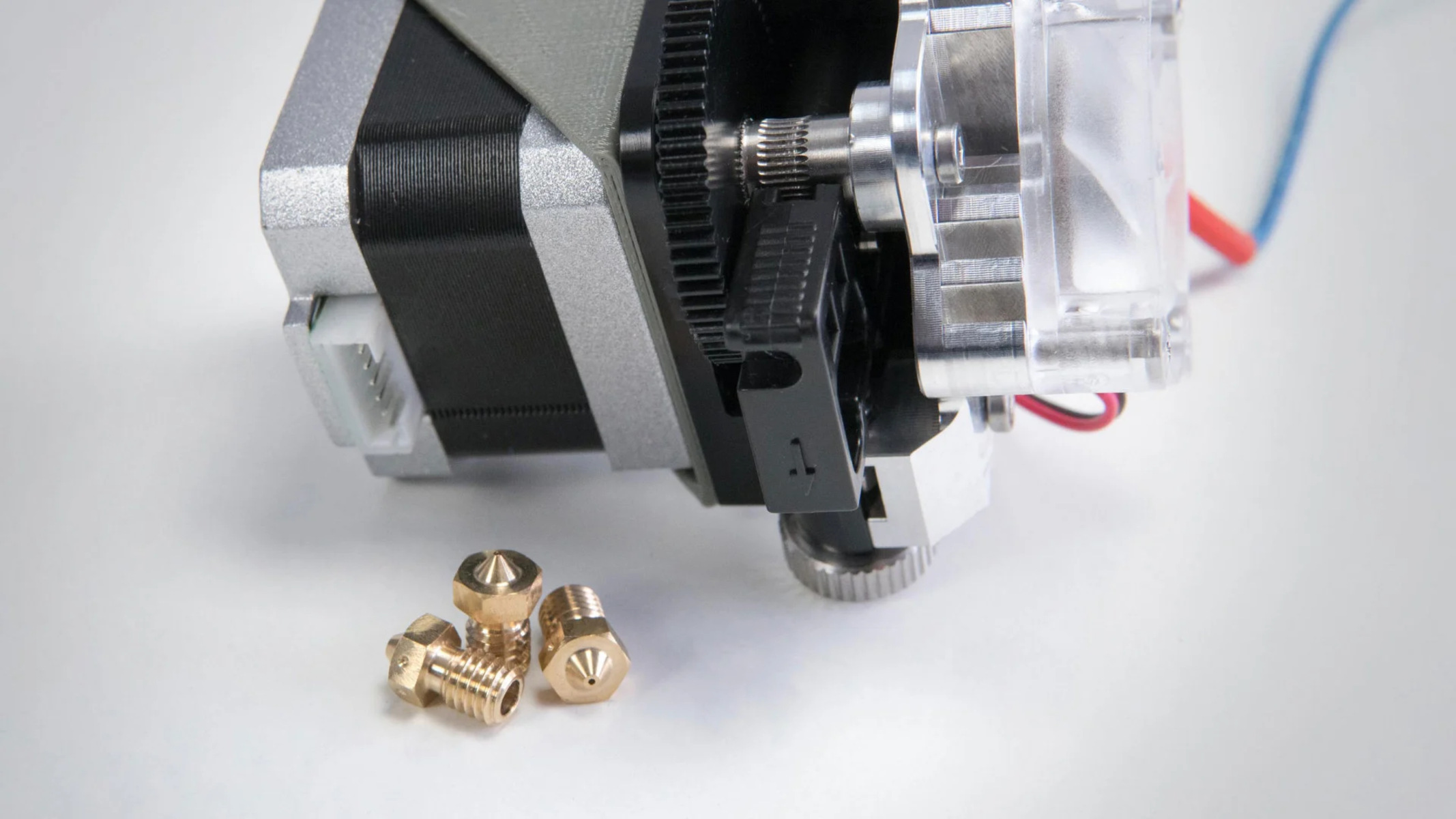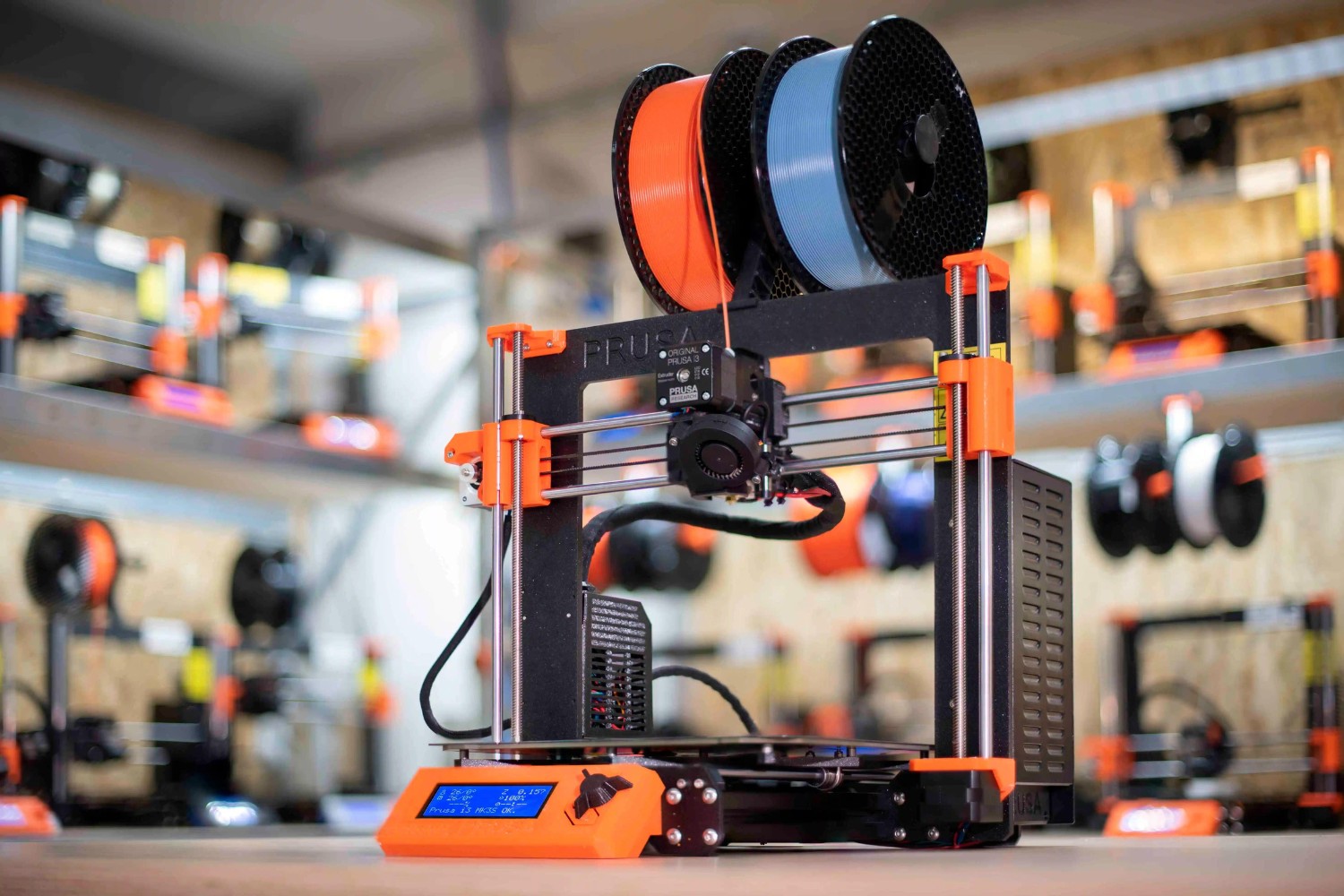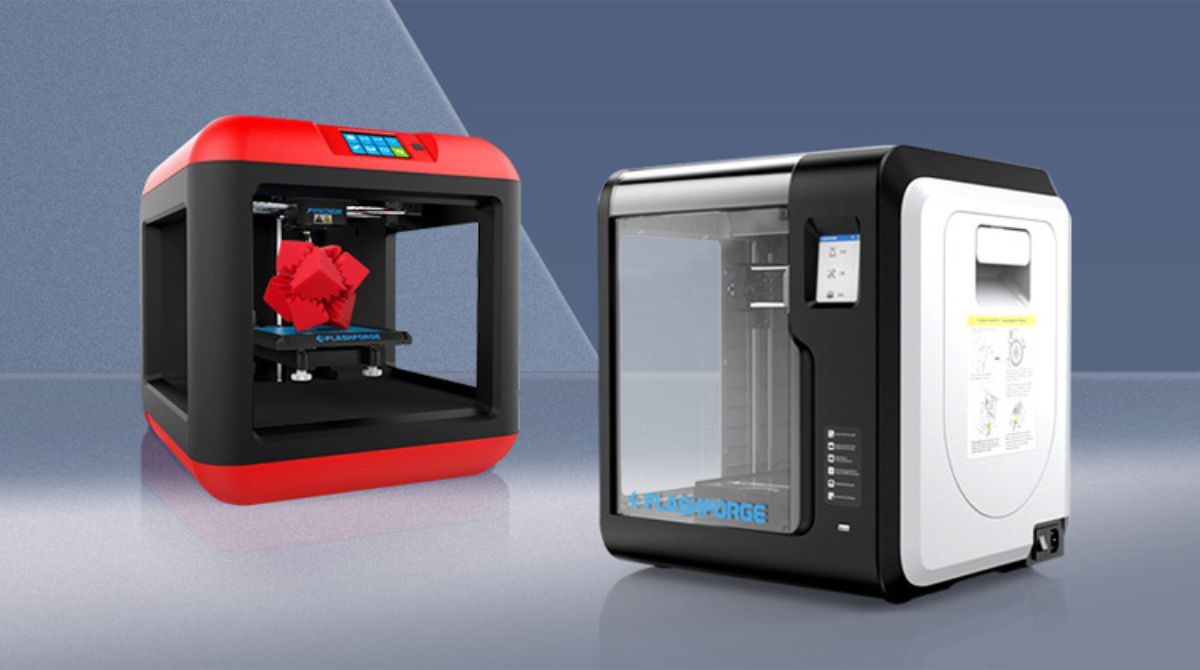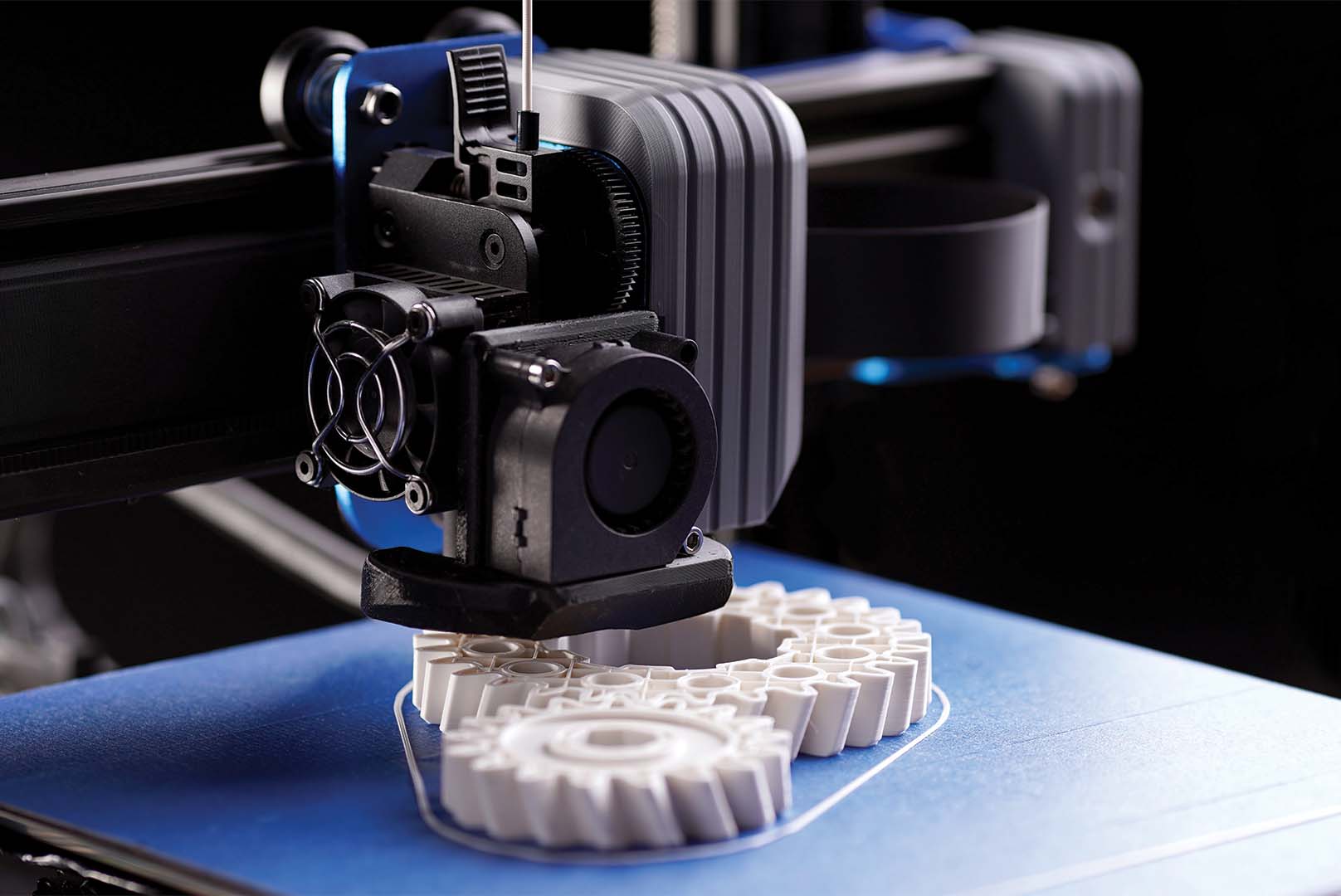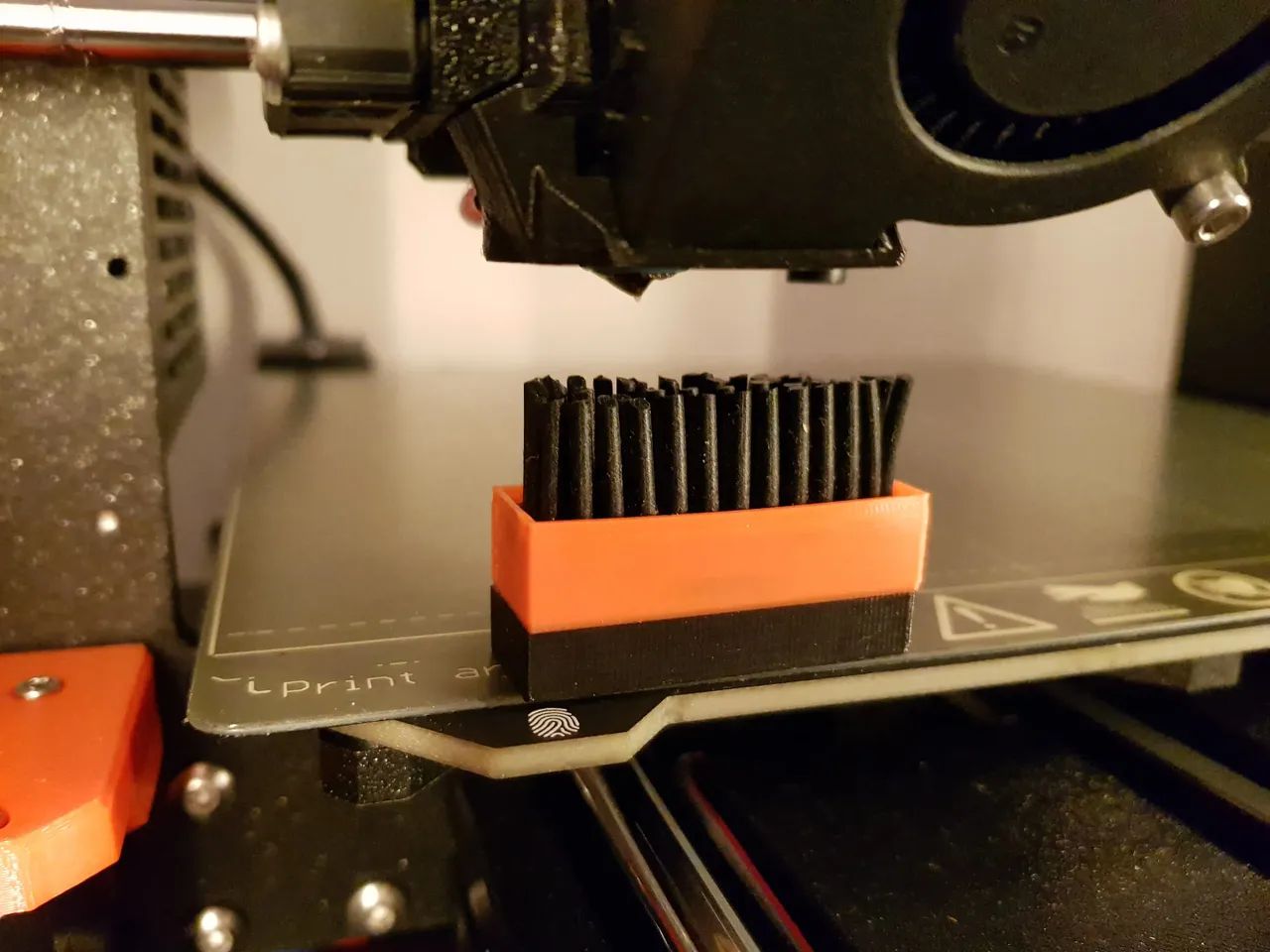Introduction
A 3D printer is a cutting-edge device that has revolutionized various industries, from manufacturing to healthcare. It allows users to bring their digital designs to life by creating physical objects layer by layer. One of the key components in a 3D printer is the heated nozzle, which is responsible for melting the filament and depositing it onto the build surface.
The heated nozzle plays a crucial role in the 3D printing process, ensuring that the filament is in its molten state so that it can be accurately extruded and deposited. Without the heated nozzle, the material would remain solid, making it impossible to form the desired shape. This makes the heated nozzle an integral part of any 3D printer.
But what exactly is the heated nozzle called? In the world of 3D printing, it goes by several names, including the extruder nozzle, hot end, or simply the nozzle. Regardless of the name, its function remains the same – to heat the filament and guide it as it is deposited layer by layer during the printing process.
In this article, we will delve deeper into the heated nozzle and explore its importance in the world of 3D printing. We will also discuss the different types of heated nozzles available and provide valuable tips for maintaining and cleaning this crucial component.
So, let’s dive in and discover more about the heated nozzle and its role in the fascinating world of 3D printing.
What is a 3D printer?
A 3D printer is a type of machine that can turn digital designs into physical objects. It uses a process called additive manufacturing, where layers of material are sequentially deposited to create a three-dimensional object. This stands in contrast to traditional subtractive manufacturing methods, where material is carved away from a solid block to create the desired shape.
The concept of 3D printing may seem futuristic, but it has already made a significant impact in various industries. From rapid prototyping in product development to creating intricate medical implants, 3D printers offer endless possibilities for innovation.
Essentially, a 3D printer follows a specific workflow to produce objects. It starts with a 3D digital model, which is created using computer-aided design (CAD) software or obtained from a 3D scanner. The model is then sliced into thin horizontal layers, each representing a specific height. These layers serve as the blueprint for the 3D printer, guiding it on how to construct the object.
Once the slicing process is complete, the 3D printer begins its work. It heats the filament, a thin strand of material (usually plastic), until it reaches its melting point. This molten filament is then extruded through a heated nozzle and carefully deposited, layer by layer, onto the build surface. As each layer solidifies, the 3D printer moves up or down, depending on the design, to continue building the object.
Throughout the printing process, the 3D printer precisely controls the movement of the nozzle and the deposition of the material, ensuring the accuracy and integrity of the final product. Some advanced 3D printers even have multiple extruders, allowing the use of different materials or colors in a single print.
The ability to create complex shapes, intricate details, and functional prototypes sets 3D printers apart from traditional manufacturing methods. They offer greater design freedom, reduced production time, and cost-effective solutions for various industries and applications.
As technology advances, 3D printers are becoming more accessible and affordable, enabling individuals, businesses, and educational institutions to explore the endless possibilities of this groundbreaking technology.
The importance of the heated nozzle
The heated nozzle is a critical component of a 3D printer, playing a crucial role in the 3D printing process. It performs two key functions: heating the filament to its melting point and depositing it onto the build surface.
One of the primary benefits of using a heated nozzle is that it enables the filament to melt and become malleable. Many 3D printers use thermoplastics as the printing material, which are solid at room temperature. The heated nozzle raises the temperature of the filament to its specific melting point, typically around 200-250 degrees Celsius. This softens the material, allowing it to be extruded and shaped as needed.
Without the heated nozzle, the filament would remain in its solid state, making it impossible to mold into the desired shape. The ability to heat the filament ensures that it is in a workable state, enabling precise deposition and layering during the printing process.
Furthermore, the heated nozzle also plays a vital role in the adhesion of the printed object to the build surface. As the molten filament is extruded from the nozzle and deposited onto the build surface, it gradually solidifies and adheres to the previous layers. This bonding process is crucial for maintaining the structural integrity of the printed object.
Additionally, the temperature of the nozzle can be adjusted to optimize the printing process. Different filaments have different melting points, and adjusting the nozzle temperature ensures that the filament is at the ideal consistency for extrusion. The heated nozzle also helps prevent clogging by keeping the filament in its molten state, allowing for a smoother and more continuous flow.
In summary, the heated nozzle is an indispensable component in a 3D printer. It facilitates the proper melting and extrusion of the filament, enabling the creation of intricate and accurate designs. The heated nozzle also ensures the adhesion and structural integrity of the printed object. Its temperature control capabilities further enhance the overall printing process, providing optimal conditions for successful and high-quality prints.
What is the heated nozzle called?
In the world of 3D printing, the heated nozzle has multiple names, but they all refer to the same component. It is commonly known as the extruder nozzle, hot end, or simply the nozzle.
The term “extruder nozzle” accurately describes its function in the 3D printing process. The nozzle extrudes or pushes out the molten filament, creating a continuous flow of material that is precisely deposited layer by layer. It shapes and controls the flow of the filament, allowing for the creation of intricate designs and precise details.
The name “hot end” refers to the fact that the nozzle is the part of the 3D printer that gets heated. It is typically connected to a heating element, which raises the temperature to melt the filament. The term “hot end” helps differentiate it from other components of the 3D printer that do not require heating.
Lastly, the simplest name for the heated nozzle is just “nozzle.” This term is often used in the context of discussing the individual component rather than its specific function. The nozzle is responsible for extruding the molten filament and shaping it into the desired form during the 3D printing process.
While these names are used interchangeably, it is important to note that they all refer to the heated nozzle of a 3D printer. Regardless of the name used, its role remains the same – to heat the filament and guide it accurately throughout the printing process.
So, whether you refer to it as the extruder nozzle, hot end, or simply the nozzle, know that it is a vital component of a 3D printer that enables the creation of incredible three-dimensional objects.
Understanding the components of a 3D printer
A 3D printer consists of several key components that work together to bring digital designs to life. Understanding these components is essential for getting a comprehensive picture of how a 3D printer operates and how each part contributes to the printing process.
1. Frame: The frame provides the structure and stability to the 3D printer. It holds all the components in place and ensures precise movement during printing.
2. Build Surface: This is the platform where the object is printed. It may be a heated bed or a non-heated surface, depending on the type of printer. The build surface should be suitable for proper adhesion and easy removal of the printed object.
3. Heated Nozzle: As we discussed earlier, the heated nozzle is responsible for melting the filament and depositing it onto the build surface. It plays a crucial role in shaping and controlling the flow of the molten filament.
4. Extruder Assembly: The extruder assembly consists of various components, including the extruder motor, filament drive gear, and filament guide. It feeds the filament into the heated nozzle and ensures a consistent flow throughout the printing process.
5. Motion Control System: This system includes motors, belts, and pulleys that control the movement of the print head or build plate. It enables precise positioning and smooth movement during printing.
6. Control Board: The control board is the brain of the 3D printer, responsible for processing instructions and controlling the various components. It interprets the commands from the computer and coordinates the movement and operation of the printer.
7. Power Supply: The power supply provides the necessary electrical power to operate the 3D printer. It ensures that all components receive the correct voltage and current for efficient and safe operation.
8. Filament: The filament is the material used for 3D printing. It is typically a thermoplastic, such as PLA or ABS, which melts when heated and solidifies when cooled. The filament comes in various colors and can be easily loaded and unloaded through the extruder assembly.
These are just a few key components of a 3D printer, but there may be additional features and parts depending on the specific model and type of printer. Understanding the role and interaction of these components is essential for troubleshooting and optimizing the performance of the 3D printer.
By comprehending the functionality of each component, you can better appreciate the intricate process that takes place within a 3D printer and harness the technology’s full potential for your creative projects.
Popular types of heated nozzles
When it comes to 3D printing, there are several types of heated nozzles available, each offering unique advantages and suitable for specific printing needs. Let’s explore some of the popular types:
1. Brass Nozzle: Brass nozzles are commonly used in 3D printers due to their excellent thermal conductivity and affordability. They provide good heat transfer, which allows for efficient heating of the filament. Brass nozzles are compatible with a wide range of materials and are a popular choice for general-purpose printing.
2. Stainless Steel Nozzle: Stainless steel nozzles are preferred for their durability and resistance to corrosion, making them suitable for printing abrasive materials like carbon fiber or metal-filled filaments. They can withstand higher temperatures without wearing out quickly, making them a robust option for high-temperature printing.
3. Hardened Steel Nozzle: Hardened steel nozzles are extremely durable and can handle very abrasive materials. They have a hardened coating that provides excellent wear resistance, allowing for extended printing with abrasive filaments. These nozzles are ideal for industrial applications or when printing with materials that contain particles such as wood or glass.
4. Ruby Nozzle: Ruby nozzles have gained popularity for their exceptional wear resistance. They are made with a small ruby gemstone embedded in the tip, making them suitable for continuous and high-volume printing of abrasive materials. Ruby nozzles are more expensive than other types but offer unmatched longevity and reliability.
5. Olsson Ruby Nozzle: The Olsson Ruby nozzle combines the advantages of a brass nozzle with the superior wear resistance of a ruby nozzle. It has a brass body with a small ruby tip, providing durability, good heat transfer, and resistance to abrasion. This hybrid design makes the Olsson Ruby nozzle a versatile choice for a wide range of printing materials.
6. Copper Nozzle: Copper nozzles are known for their excellent heat conductivity, making them a popular choice for high-speed printing. They transfer heat quickly from the heating element to the filament, allowing for fast and efficient printing. Copper nozzles are often used in applications where speed is a priority, such as large-scale or industrial 3D printing.
These are just a few examples of the popular types of heated nozzles available on the market. It’s important to consider the specific requirements of your printing projects, such as material compatibility and desired print quality, when choosing the right nozzle for your 3D printer. Additionally, it’s worth noting that nozzles come in various diameters, commonly ranging from 0.2mm to 1.2mm, allowing for different levels of detail and speed in the printing process.
By understanding the characteristics and benefits of each type of nozzle, you can make an informed decision and select the one that best suits your specific printing needs.
Factors to consider when choosing a heated nozzle
When choosing a heated nozzle for your 3D printer, there are several important factors to consider. Each factor plays a role in determining the performance, print quality, and overall user experience. Here are some key considerations to keep in mind:
1. Material Compatibility: Different nozzle materials have varying levels of compatibility with different types of filaments. Consider the type of materials you plan to print with and ensure that the nozzle is suitable for those materials. Some materials, such as carbon fiber or metal-filled filaments, may require more durable and abrasion-resistant nozzles.
2. Nozzle Diameter: The nozzle diameter affects the level of detail, print speed, and material flow rate. Smaller nozzle diameters, like 0.4mm, provide finer details but may take longer to print. Larger nozzle diameters, such as 0.8mm, allow for faster printing but with reduced detail. Consider the balance between detail and speed that suits your specific needs.
3. Printing Temperature: The maximum temperature that the nozzle can withstand is crucial, especially when printing with high-temperature materials like ABS or nylon. Ensure that the nozzle can reach the necessary temperature without compromising its integrity or performance.
4. Abrasion Resistance: If you plan to use abrasive materials, such as carbon fiber or metal-filled filaments, consider a nozzle with good abrasion resistance. Nozzles with hardened steel or ruby tips are better suited for printing with abrasive materials due to their enhanced durability.
5. Budget: Nozzles come in a range of prices, so it’s important to consider your budget. While it may be tempting to opt for the most affordable option, keep in mind that higher-quality nozzles may offer better performance, longevity, and print quality in the long run.
6. Printing Speed: If you prioritize faster printing, consider a nozzle with good heat conductivity, like brass or copper. These materials help transfer heat more efficiently, enabling faster extrusion and deposition of the filament.
7. Compatibility with Printer: Ensure that the nozzle is compatible with your specific 3D printer model. Different printers have unique specifications and require specific nozzle designs or dimensions.
Ultimately, the choice of a heated nozzle depends on your specific printing requirements and preferences. Consider the materials you will be using, the desired level of detail, printing speed, and budget. It’s also helpful to read reviews and gather user experiences to make an informed decision. Experimentation and testing with different nozzles may be necessary to find the optimal configuration for your specific printing needs.
By carefully considering these factors, you can select a heated nozzle that will enhance the performance and capabilities of your 3D printer, allowing you to achieve your desired print quality and efficiently bring your designs to life.
Tips for maintaining and cleaning the heated nozzle
Maintaining and cleaning the heated nozzle of your 3D printer is essential to ensure optimal performance, prevent clogs, and extend its lifespan. Here are some useful tips to help you keep your heated nozzle in top condition:
1. Regularly inspect and clean: Make it a habit to regularly inspect the nozzle for any residue or debris buildup. Over time, leftover filament or dust particles can accumulate and affect the quality of your prints. Gently clean the nozzle using a soft brush or a specialized nozzle cleaning tool.
2. Perform cold pulls: Cold pulling, also known as cold atomic pull or filament change, is an effective method to unclog the nozzle. Heat the nozzle to the recommended temperature for the material you are using, retract the filament, then allow it to cool slightly. Once cooled, apply gentle force to pull out the filament, helping to remove any residue or blockages inside the nozzle.
3. Use a nozzle cleaning filament: Nozzle cleaning filaments are specifically designed to remove stubborn residue from the inside of the nozzle. Follow the manufacturer’s instructions to heat the nozzle and push the cleaning filament through. The filament will help dislodge any hardened debris and keep the nozzle clean.
4. Avoid excessive filament retraction: Excessive and frequent retraction can lead to wear and tear on the nozzle. While retraction is necessary for certain prints, try to optimize the retraction settings to minimize the strain on the nozzle. This will help prolong its lifespan and maintain better printing quality.
5. Be cautious with nozzle scraping: If you need to remove any stubborn residue from the outside of the nozzle, exercise caution while scraping. Use a soft tool, such as a wooden or plastic scraper, to prevent damaging the delicate nozzle surface. Gentle scraping combined with heating the nozzle can help remove stuck-on residue effectively.
6. Avoid touching the nozzle with bare hands: When cleaning or performing maintenance, make sure to let the nozzle cool down completely before touching it. The heated nozzle can reach high temperatures during printing, and contact with bare skin can cause burns or injuries.
7. Replace the nozzle when needed: Over time, the nozzle may wear out or become damaged. If you notice a decline in print quality or experience persistent clogs despite regular maintenance, it may be time to replace the nozzle. Follow the manufacturer’s guidelines for replacing the nozzle and ensure you choose a compatible replacement.
By following these tips, you can ensure that your heated nozzle remains clean, unclogged, and in good working condition. Regular maintenance and cleaning will help optimize your 3D printing experience, allowing you to achieve consistent and high-quality prints with minimal interruptions.
Conclusion
The heated nozzle is undoubtedly a vital component in the world of 3D printing. It plays a crucial role in melting the filament and depositing it onto the build surface, allowing for the creation of intricate and accurate 3D prints. Whether referred to as the extruder nozzle, hot end, or simply the nozzle, it is responsible for shaping and controlling the flow of the molten filament during the printing process.
Understanding the components of a 3D printer, including the heated nozzle, provides insights into how this fascinating technology brings digital designs to life. From the frame to the filament, each part contributes to the overall functionality and performance of the printer.
When choosing a heated nozzle, factors such as material compatibility, nozzle diameter, printing temperature, and budget should be considered. Selecting the right nozzle ensures optimal printing results and efficiency for your specific requirements.
Maintaining and cleaning the heated nozzle is also essential for optimal performance and longevity. Regular inspection, gentle cleaning, cold pulls, and the use of nozzle cleaning filaments will help prevent clogs and maintain the quality of your prints.
By understanding the importance of the heated nozzle, the various types available, and how to properly care for and maintain it, you can enhance your 3D printing experience and achieve outstanding results.
So, as you continue your journey in the world of 3D printing, remember to appreciate the significant role of the heated nozzle. Embrace the endless possibilities it offers and unleash your creativity in bringing digital designs to life.







